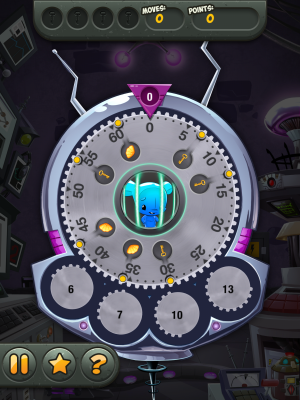[This is a greatly expanded version of the essay published in Edge as my response to the Annual Edge Question for 2016.]
JANUARY 18, 2016. If you google the term “education science”, the search engine will return almost 2 billion hits. Yet even those of us who might be regarded as “in the field” will admit that there is no “there” there—nothing that could legitimately be called a science.
The education field is much like medicine was in the Nineteenth Century, a human practice, guided by intuition, experience, and occasionally inspiration. It took the development of modern biology and biochemistry in the early part of the Twentieth Century to provide the solid underpinnings of today’s science of medicine.
To be sure, since the second half of Twentieth Century, a great deal of work has been done on pedagogy, and much has been learned—though depressingly little has found its way into the classroom. But even the most ardent participant in that work would admit that the field could not be called a science, alongside, say, chemistry, physics, or medical science.
But that may be about to change. To me—a mathematician who became interested in mathematics education in the second half of my career—it seems that we may at last be seeing the emergence of a genuine science of learning. Given the huge significance of education in human society, if that is the case, then this will represent a major advance for Humanity.
At the risk—nay certainty—of raising the ire of many researchers, I should start out by observing that I am not basing my assessment on the rapid growth in popularity of educational neuroscience. You know, the kind of study where a subject is slid into an fMRI machine and asked to solve math puzzles. Those studies are valuable, and are undoubtedly science, but at the present stage, at best they provide some very tentative clues about how people learn, and little specific in terms of how to help people learn. (A good analogy would be trying to diagnose an engine fault in a car by moving a thermometer over the hood.)
Yes, I follow educational neuroscience research (mostly at Internet distance), and am often in admiration of the ingenuity of the researchers, but I don’t see it as even close to providing a solid basis for education the way, say, the modern theory of genetics advanced medical practice. One day? Maybe. But not yet.
Rather, I am encouraged in thinking we are seeing the emergence of a science of learning by the possibilities Internet technology brings to the familiar, experimental cognitive science approach.
The problem that has traditionally beset learning research has been its huge dependence on the individual teacher, which makes it near impossible to run the kinds of large scale, control group, intervention studies that are par-for-the-course in medicine. (No, I am not about to argue that computers will replace teachers! On the contrary, I am firmly of the opinion that teaching is inherently and inescapably a human–human endeavor.)
The problem raised by that inescapable centrality of the human teacher is that classroom studies invariably end up as studies of the teacher as much as of the students.
In fact, it is even worse. What those studies frequently measure is as much, if not more, the effect of the home environment of the students than what goes on in the classroom.
For instance, news articles often cite the large number of successful people who as children attended a Montessori school, a figure hugely disproportionate to the relatively small number of such schools. Now, it may well be the case (I think it is) that the Montessori educational principles are good, but it’s also the case that such schools are magnets for passionate, dedicated teachers and the pupils that attend them do so because they have parents who go out of their way to enroll their offspring in such a school, and already raise their children in a learning-rich home environment.
Internet technology offers an opportunity to carry out medical-research-like, large scale control group studies of classroom learning that can significantly mitigate the “teacher effect” and “home effect”, allowing useful studies of different educational techniques to be carried out. Provided you collect the right data, Big Data techniques can detect patterns that cut across the wide range of teacher–teacher and family–family variation, allowing useful educational conclusions to be drawn.
An important factor is that a sufficiently significant part of the actual learning is done in a digital environment, where every action can be captured.
This is not easily achieved. The vast majority of educational software products operate around the edges of learning: providing the learner with information; asking questions and capturing their answers (in a machine-actionable, multiple-choice format); and handling course logistics with a learning management system.
What is missing is any insight into what is actually going on in the student’s mind—something that can be very different from what the evidence shows, as was dramatically illustrated for mathematics learning several decades ago by a study now famously referred to as “Benny’s Rules”, where a child who had aced a whole progressive battery of programmed learning cycles was found (by a lengthy, human–human working session) to have constructed an elaborate internal, rule-based “mathematics” that enabled him to pass all the tests with flying honors, but was extremely brittle and bore no relation to actual mathematics.
But real-time, interactive software allows for much more than we have seen flooding out of tech hotbeds such as Silicon Valley.
To date, the more effective uses of interactive technology from the viewpoint of running large-scale, comparative learning studies, have been by way of learning video games—so-called game-based learning. But it remains an open question how significant is the game element in terms of learning outcomes. My bet, based on a few small studies, is on it being an important factor, but this is a question that can and will be answered by solid, scientific studies.
And there have been such studies. But it would be easy to have missed them.
With large numbers of technology companies, (as well as book publishers and occasionally media moguls) vying for education customers—a trend driven almost exclusively by expertise looking for new markets (hammers seeking new nails)—and making often wildly extravagant claims in the process, the small number of studies in the past few years that have shown some remarkable results have not garnered much media attention.
That is not entirely the fault of the news media. With results still largely tentative, and for the most part not fully explained, those involved in those studies (I am one of them) have been reluctant to go out on a limb with bold statements.
That reluctance is heightened by the depressing reality that the vast majority of so-called “learning games” are of a very poor quality and offer little or no real learning, relying instead on bold marketing claims. The last thing serious researchers want to do is find their claims dismissed as yet more vacuous hype.
To cut to the chase, in the case of elementary through middle school mathematics learning (which is the research I am familiar with), what has been discovered, by a number of teams, is that digital learning interventions of as little as ten minutes a day, for three to five days a week, over a course of as little as one month, can result in significant learning gains when measured by a standardized test—with improvements of as much as 16% in some key thinking skills. (I list some sources at the end.)
That may sound like an educational magic pill. It almost certainly is not. I believe it’s an early sign that we know even less about learning than we thought we did.
For one thing, part of what is going on is that many earlier studies measured the wrong things—knowledge rather than thinking ability. The learning gains found in the studies I am referring to are not in the area of knowledge acquired or algorithmic procedures mastered, rather in high-level problem solving ability. (So the standardized tests used cannot be multiple-choice; they require human grading or game-based assessment techniques.)
What is exciting about these findings, is that in today’s information- and computation- rich environment, those very human problem-solving skills are the ones now at a premium.
Like any good science, and in particular any new science, this work has generated far more research questions than it has answered.
Indeed, it is too early to say it has answered any questions. Most of us embarked on the studies with the more modest ambitions of developing new learning tools, having no expectation of finding such dramatic outcomes.
In the case of math learning, among the many factors that may be at play, all of which a (well designed) math learning game can offer, and all which are known to have a positive impact on learning, are:
- Use of a human-friendly representation (not the traditional abstract symbols of math textbooks).
- Focus on developing number sense and problem solving ability.
- High level of engagement.
- Instant feedback (both positive and negative).
- Steady flow of dopamine—known to have positive impact on memory formation and consolidation.
- Learning through failure—in a playful, safe environment.
- “Failure” treated—and regarded—as “not yet succeeded”.
- Constant sense of “I can do this on the next try.”
- Lots of repetition—but at the demand of the student/player.
- Student/player is in control.
- Student/player has ownership.
- Growth Mindset—good games encourage and develop this. (This is the important notion Carol Dweck is famous for.)
- Fluid intelligence (Gf)—games require and develop this. (Loosely speaking, this is the ability to hold several pieces of information in the mind at the same time and reason fluidly with them.)
I have written about many (not all) of the factors listed above in a series of video-game learning articles in this blog. (Starts here.) Taking a broader perspective than mathematics, the many writings and video interviews on games and learning by James Paul Gee have much to say that can help us understand how those factors and others can effect learning.]
So, as of now we what we have are a scientifically sound method to conduct experiments at scale, some very suggestive early results, and a resulting long and growing list of research questions, all of which are testable. The sure looks to me like the beginnings of a genuine science of learning.
Selected sources
Berkowitz, Schaeffer, Maloney, Peterson, Gregor, Levine, Beilock, 2015. Math at home adds up to achievement in school, Science 09 Oct 2015: Vol. 350, Issue 6257, 196-198.
Kiili, Devlin, Perttula, Tuomi, 2015. Using video games to combine learning and assessment in mathematics education, International Journal of Serious Games, October 2015, 37-55.
Pope & Mangram, 2015. Wuzzit Trouble: The Influence of a Digital Math Game on Student Number Sense, International Journal of Serious Games, October 2015, 5-22.
Popovic, 2014. “Learning basic Algebra by playing 1.5h”. Center for Game Science, Uni of Washington.
Riconscente, 2013. Results From a Controlled Study of the iPad Fractions Game Motion Math, Games and Culture 8(4), 186-214.
Wendt & Rice, 2013. “Evaluation of ST Math in the Los Angeles Unified School District”, report by WestEd.


